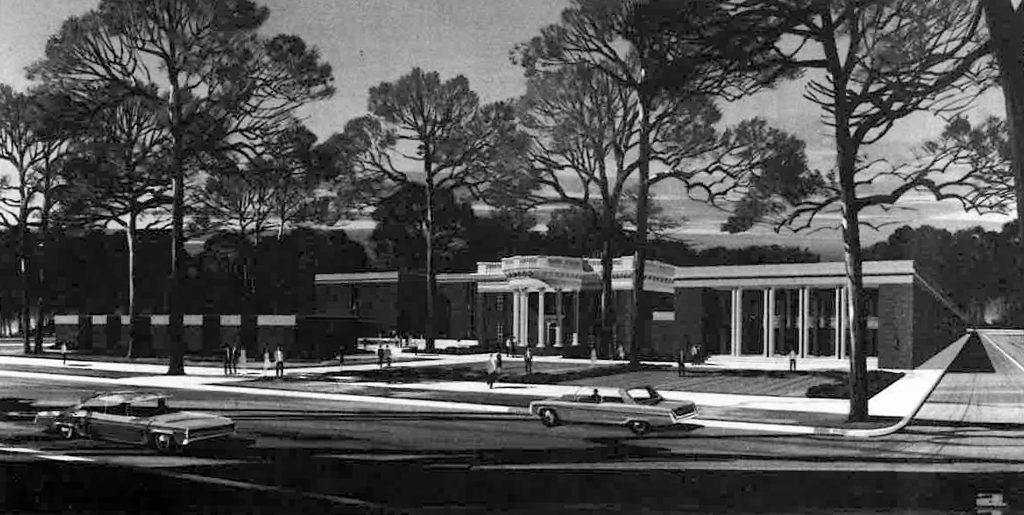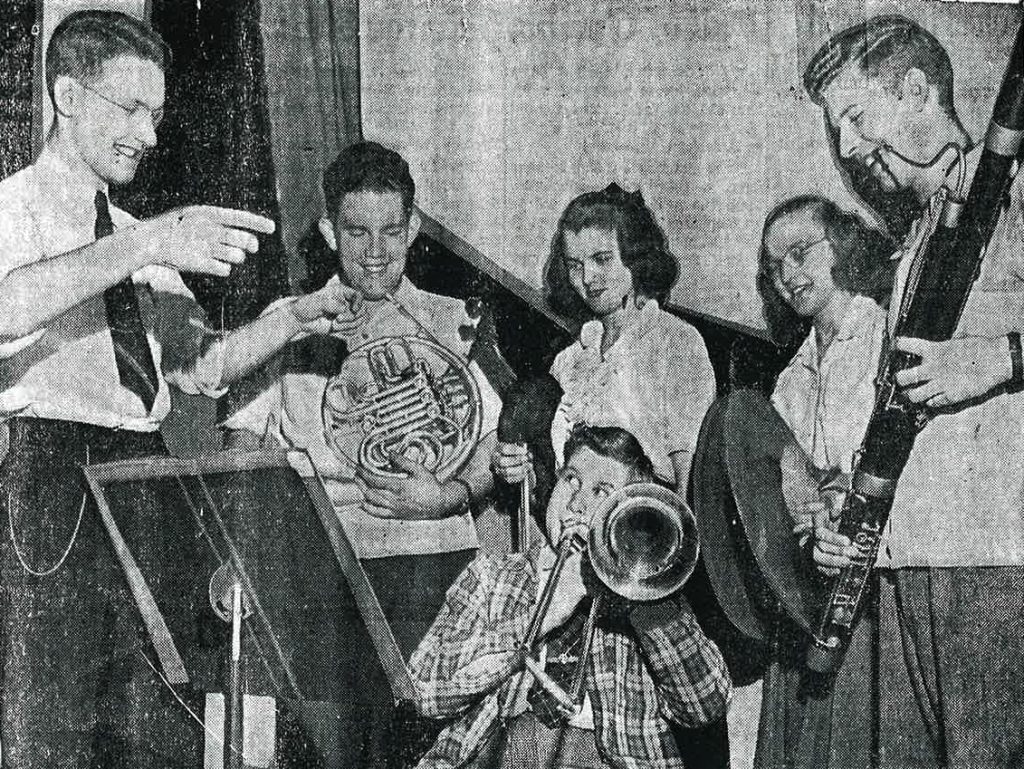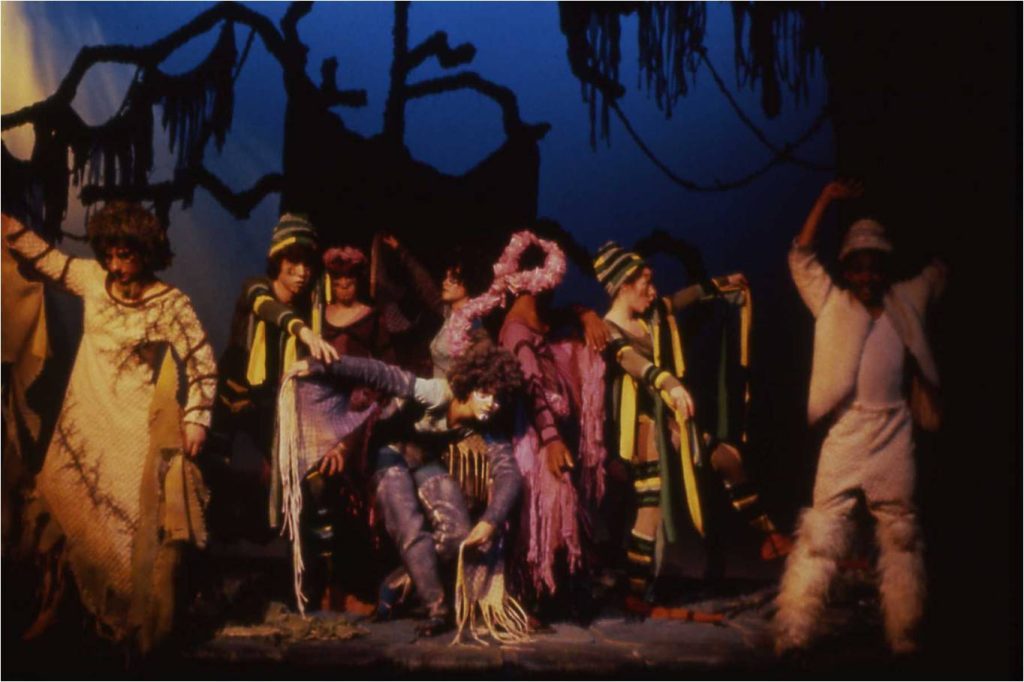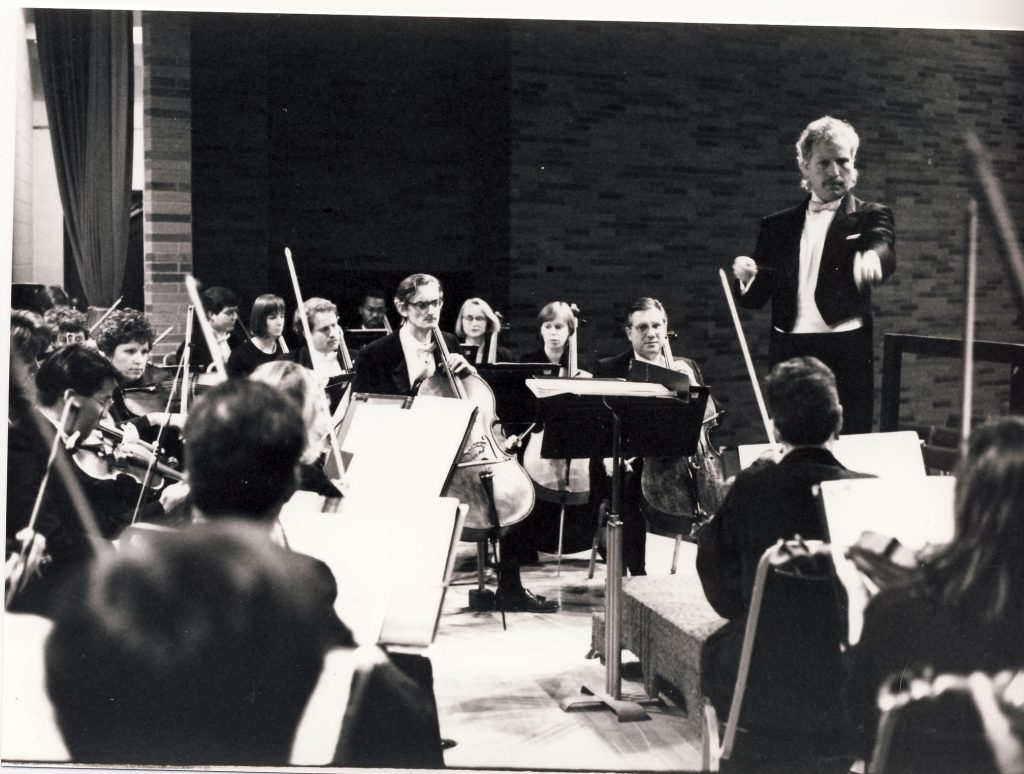History
 FIM traces its roots to the formation of the Flint Community Music Association (FCMA) under the leadership of automotive pioneer and philanthropist J. Dallas Dort. As early as 1913, with Dort’s influence and financial backing the Flint Choral Union formed as an active community chorus which sought to support social relationships based on the enjoyment of singing. Anyone who was interested, regardless of age, gender, race, religion, financial status or even ability was welcome and invited to participate.
FIM traces its roots to the formation of the Flint Community Music Association (FCMA) under the leadership of automotive pioneer and philanthropist J. Dallas Dort. As early as 1913, with Dort’s influence and financial backing the Flint Choral Union formed as an active community chorus which sought to support social relationships based on the enjoyment of singing. Anyone who was interested, regardless of age, gender, race, religion, financial status or even ability was welcome and invited to participate.
As enthusiasm increased for these activities, Dort and others began to explore a wider base of operations, forming the FCMA on September 20, 1917 with the stated purpose ‘to promote the community interest of the City of Flint by developing a common, or general, participation in music.’ In addition to sponsoring the Choral Union, the earliest activities of the association were centered around community sings which became very important to citizen morale at the onset of World War 1. Also very popular were large noon-day factory sings held at automobile plants throughout the city, many of which became the seeds for factory choruses which performed together for decades.
Community singing soon expanded through the efforts of George Oscar Bowen, first Music Director (1917-1921) of FCMA. The Flint Symphony Orchestra came into being in January, 1918 as a community orchestra of about twenty players, largely motivated by the need of the Choral Union to have proper orchestral accompaniment to perform large choral works. As early as 1920 the Flint Symphony Orchestra had grown and was performing stand-alone classical concerts with its first full series of performances in the 1921-22 season.
 As the birth of the automobile industry in Flint led to rapid population growth the FCMA emerged as an important agent in improving the general quality of life in the community. William W. Norton, FCMA’s second Music Director from 1921-1949 stated, “The Community Music Association is a civic agency through which better citizenship is promoted by the varied use of music as a medium. It is for everybody and not simply for musicians. Music, being the universal language, includes all nationalities, all races, all ages, all creeds, all lines of pursuit. It minimizes our differences and emphasizes our common ground for unity.”
As the birth of the automobile industry in Flint led to rapid population growth the FCMA emerged as an important agent in improving the general quality of life in the community. William W. Norton, FCMA’s second Music Director from 1921-1949 stated, “The Community Music Association is a civic agency through which better citizenship is promoted by the varied use of music as a medium. It is for everybody and not simply for musicians. Music, being the universal language, includes all nationalities, all races, all ages, all creeds, all lines of pursuit. It minimizes our differences and emphasizes our common ground for unity.”
FCMA sponsored or supported the growth of many musical groups under Norton’s tenure. Most significantly the philosophy of FCMA from the beginning conceived the importance of school music as a core component of their community-wide program. FCMA was soon providing music education and instrumental instruction in school music programs and continued this practice under Norton. Raymond Gerkowski followed Norton as FCMA music director (1949-1966) expanding the school music program and serving dual roles as Music Director of FCMA and Director of Music for Flint schools.
 Another unique feature of the FCMA as sponsor of the Symphony Orchestra was the mutually agreeable relationship they had maintained between amateur and professional musicians. The union musicians participated freely, and without pay, for the benefit of the community musically and culturally. It did so with the understanding that requests for music of a commercial nature were always referred by FCMA to the Federation of Musicians. This was the orchestra model for several decades.
Another unique feature of the FCMA as sponsor of the Symphony Orchestra was the mutually agreeable relationship they had maintained between amateur and professional musicians. The union musicians participated freely, and without pay, for the benefit of the community musically and culturally. It did so with the understanding that requests for music of a commercial nature were always referred by FCMA to the Federation of Musicians. This was the orchestra model for several decades.
As Flint grew and prospered post World War II, civic leaders demonstrated enthusiasm to upgrade all the cultural offerings in the newly forming cultural center campus. This included plans for the construction of an orchestra hall, Whiting Auditorium which would open May 1, 1967. Just as J. Dallas Dort had been instrumental in the formation of FCMA, his son David Dort would play a significant role in transiting the Flint Symphony Orchestra to the status of a professional orchestra.
In 1965, the Musical Performing Arts Association (MPAA) was formed to professionalize the Flint Symphony Orchestra and soon afterward hired its first professional conductor, William Byrd. While accomplishing the main objective the MPAA soon found itself competing with FCMA for limited community resources including the highly qualified volunteer leadership required to steward two esteemed organizations.
 Not long after, both organizations experiencing similar challenges, agreed to merge as the Flint Institute of Music in 1971. It was a sound move with strong community support and led to significant programmatic and creative growth, including the formation of the FIM Community Music School, later renamed Flint School of Performing Arts (1986). In 2009 FIM accepted leadership and management of the Flint Youth Theatre originally founded in 1957. And, the newest artistic division program, Flint Repertory Theatre was established by FIM in 2018, to provide innovative professional theater to the city and surrounding region.
Not long after, both organizations experiencing similar challenges, agreed to merge as the Flint Institute of Music in 1971. It was a sound move with strong community support and led to significant programmatic and creative growth, including the formation of the FIM Community Music School, later renamed Flint School of Performing Arts (1986). In 2009 FIM accepted leadership and management of the Flint Youth Theatre originally founded in 1957. And, the newest artistic division program, Flint Repertory Theatre was established by FIM in 2018, to provide innovative professional theater to the city and surrounding region.
Today, FIM offers a wide array of performances through its artistic division which includes the Flint Symphony Orchestra, Flint Repertory Theatre, FIM presenting series at Whiting Auditorium and Capitol Theatre and Movies at the Capitol Theatre. In addition, FIM provides extensive community education and engagement opportunities including long-standing favorites, Music Around Town and the Troubadours. FIM Flint School of Performing Arts, one of the largest community schools of the arts in the nation, provides music, dance & theater instruction, and performance opportunities for students of all ages and abilities.
FIM operates five performance venues, four situated on the Flint Cultural Center Campus— Whiting Auditorium, Elgood Theatre, Bower Theatre, MacArthur Recital Hall. Its fifth venue is the recently renovated, historic Capitol Theatre in downtown Flint. FIM venues host its own artistic productions, hundreds of student recitals, community events, rentals, and touring presentations from all over the world.